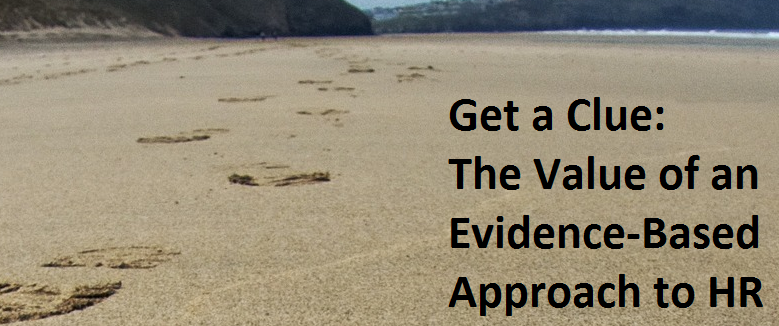One of the conversations I’m having more often is around this concept of the contingent workforce, but in a recent presentation I realized some people weren’t aware of the issues surrounding this group. In essence,this segment of the workforce in the United States is made up of temp workers, contractors, freelancers, part timers, and other non-full time labor. With me so far? Now, let’s look at how big of a deal this is:
“Up to 30% of the Fortune 100 workforce is contingent. That number is expected to increase to 50% by 2020.†Source
When I read that statistic recently in a research paper, the magnitude of this shift is in the makeup of the workforce really hit me. There are three key areas that this trend is impacting businesses: a focus on skills, the gig mentality, and a results-oriented approach. Nontraditional workers are making up an ever-increasing portion of the overall workforce, and for companies that don't have a clear plan to take advantage of these workers, this can slow down and even hinder their growth.
The Focus on Skills
When companies need payroll support, they seek out companies that know and do payroll on a daily basis. It's no different when they are looking for nontraditional workers. The organization has a problem, and it needs a solution. In this case that solution happens to come in the form of a person with a specific skill set to get the job done.
Often times, those skills are needed for a temporary basis if they are highly specialized. In this area, staffing and contingent workers can fill the skills gap without a long-term commitment on the part of the employer. According to one PwC study, six in ten CEOs believe that there is a skills shortage. At the same time, that shortage can be mitigated effectively through the use of temporary or contract workers for their specific skill sets.
The Gig Mindset
With the rise of the “Gig Economy,†companies and workers are seeing less of a focus on the traditional employer-employee relationship. The downside of this is that many contingent workers do not receive benefits from the employers, whether financial or personal. This Workforce article highlights one worker who felt scorned by someone she supported, which ultimately impacts her loyalty and commitment over time. Companies need to be sure they treat their contingent workers with the same respect and appreciation they afford their full-time staff.
On the other side of the equation, driven individuals with extensive skill sets can differentiate themselves in the market and command the compensation they deserve. Instead of a single company having a monopoly on a person's talent, the worker can partner with multiple employers on smaller jobs and tasks. In addition, it allows the person to focus on working in areas of strength, which we know has positive effects on the worker's ability to reach higher levels of success.
A Results-Oriented Approach
If companies want to attract and retain high quality contingent workers, the focus needs to be more on the results they achieve and less on the process they use. In my mind, this seems to tie together a combination of two strong movements in the world of work that seem to fit here.
- Dan Pink’s book, Drive, focuses on how to engage workers through three intrinsic methods: autonomy, mastery, and purpose. These three words have taken on a power all their own as companies try to create compelling work environments that engage employees and allow them to do their best work.
- The Results Only Work Environment (ROWE) movement was started at Best Buy's corporate office years ago as a way to move away from the traditional considerations of how long employees were at the office. Instead, leaders focused on whether employees were producing results. This shift forced managers to examine employee roles, determine what specifically drove performance, and measure those activities effectively.
Management of Contingent Labor
One of the challenges of contingent labor is that it’s made up of people that need to be treated like, well, people. They need to be recognized for their efforts. They need training. Their performance needs to be assessed. The problem, as many HR pros will tell you, is that we don't always want to be in charge of the contingent workers. Some of the more common reasons:
- The person isn't an employee, so procurement needs to handle them.
- I can't treat them like an employee or we might run into issues with the IRS or Department of Labor.
- With a temp hire the advantage is having the agency handle payroll, training, etc. We are offloading those tasks for a reason.
You get the picture. There are laws on the books that don't provide the flexibility for companies to handle this issue without involving some risk. On the other hand, there has traditionally been a silo mentality breaking out contingent hiring from “regular†hiring practices.
The problem won't be solved today, and there are enough companies making errors with the current laws that we probably won't see any changes to the legal side of the issue for some time. But HR can work to take ownership of the process and the contingent workforce while still developing safeguards to keep from running afoul of legal requirements.
In the end, the cause for this issue is partly due to the mindset of the HR population, and it's partly due to the existing legal framework that governs how we employ our staff.
Take this as a reminder that “the way we've always done it†might not be the best way to address issues as you move forward. Reevaluate the assumptions you might have about how work gets done. I'm excited to see how the legal environment changes over time to account for increasing work flexibility and a highly mobilized workforce.
How do you handle your contingent workers? Does your procurement team manage them, or does HR play a role in the process?Â

 About the Author: Jarrett Lee is a Research Associate Intern working with me at
About the Author: Jarrett Lee is a Research Associate Intern working with me at